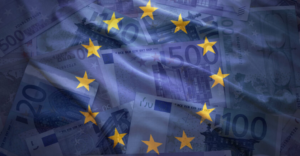
By 2035, Europe may face street protests and conflicts between people and service robots amid mass robotization of the service sector and the displacement of some workers from the labor market, according to a new Europol analytical report, The Unmanned Future(s): The Impact of Robotics and Unmanned Systems on Law Enforcement.
According to the British newspaper The Daily Telegraph, citing the document, Europol estimates that by the mid-2030s, robots and unmanned systems will be widely used in areas such as delivery and cleaning, which could lead to job losses among low-skilled workers from disadvantaged areas and cause protests accompanied by attacks on robots and infrastructure, including medical devices and service machines.
The report emphasizes that the widespread introduction of robotic systems could change not only the labor market, but also the landscape of crime and law enforcement in the EU, including new threats ranging from attacks on service robots to the use of drones for criminal purposes.
At the same time, a number of experts interviewed by the media express doubts about the realism of a “war between humans and robots” scenario in the next ten years, pointing out that the development of regulation and retraining programs could mitigate the social risks of robotization.

Participants in the panel discussion “The Strategic Role of the Danube in Logistics and Connectivity” at the international forum in Bucharest concluded that the Danube has become one of the key logistical and strategic corridors in the context of Russia’s war against Ukraine, the growth of hybrid threats, and the need to strengthen NATO and EU military mobility. In their opinion, improving the resilience and security of the Danube infrastructure should be considered a priority not only for coastal states but also for the entire Euro-Atlantic community.
The panel was moderated by Stefan Hofmann, head of the Konrad Adenauer Foundation’s offices in Romania. The discussion was joined by Andriy Kashuba, Deputy Minister of Community and Territorial Development of Ukraine (via videoconference), George Scutaru, Director General of the New Strategy Center, Wilfried Jilge, Associate Expert at the German Council on Foreign Relations, and Rear Admiral (ret.), Senior Associate Expert at the New Strategy Center, former commander of the Romanian Navy’s Maritime Component Liviu Coman.
The speakers emphasized that after the start of the war in 2022, traditional transport routes in the region became overloaded or vulnerable to military and hybrid attacks. This accelerated the development and more intensive use of the Danube infrastructure as an alternative corridor. Ukraine, they said, relies critically on Danube ports to maintain grain exports and support broader supply chains, while repeated Russian strikes on port infrastructure have exposed its vulnerability.
Participants emphasized that attacks on port facilities on the Danube have demonstrated the need for accelerated modernization of transport, transshipment, and surveillance systems, as well as enhanced protection of maritime and river infrastructure. This included expanding port capacity, upgrading the fleet, digitizing logistics processes, and improving coordination between military and civilian structures.
Following the discussion, the panel concluded that the Danube is a strategic hub for the entire Euro-Atlantic security architecture—a corridor for military mobility, a vector for economic integration, and a platform for regional cooperation. Participants emphasized the need for closer coordination between Romania, Ukraine, and the Republic of Moldova, including Ukraine’s full integration into European military mobility programs, strengthening port infrastructure, removing administrative barriers, and creating joint mechanisms to counter hybrid threats. According to experts, strengthening the stability and security of the Danube corridor is not just a regional task, but a strategic condition for the stability of Europe as a whole.

Participants in the panel discussion “Security Perspectives for 2026: Possible Developments” at the Ukraine Recovery Forum in Bucharest concluded that 2026 is shaping up to be a potential strategic turning point for Euro-Atlantic security against the backdrop of the ongoing war in Ukraine, the vulnerability of transatlantic ties, and growing pressure on the EU to strengthen its defense capabilities and strategic autonomy.
The discussion was moderated by Antena 3 CNN journalist Radu Tudor. The panel included Sorin Moldovan, State Secretary of the Romanian Ministry of National Defense; Vadym Halaychuk, First Deputy Chairman of the Verkhovna Rada Committee on EU Integration; Paul Coyer, Professor at the Institute of World Politics (USA), Nico Lange, Senior Research Fellow at the Munich Security Conference, and Shigeo Mutsushika, Executive Director of the Kazankai Foundation and Honorary Professor at Shizuoka University (Japan).
According to the speakers, Europe’s security environment in 2026 will be determined by a combination of several factors: the Russian Federation’s ongoing full-scale invasion of Ukraine, the fragmentation of transatlantic unity, and growing competition between major powers, including the use of hybrid instruments. Against this backdrop, Europe, in their opinion, should play a “more mature strategic role” – not only in the defense sphere, but also in industrial and energy policy.
“European states can no longer take security for granted – they need their own capabilities that will complement, not replace, the transatlantic partnership,” Lange said.
The participants paid particular attention to the stability of the Black Sea region and the resilience of NATO’s eastern flank, which were identified as key pillars of the European security architecture. It was emphasized that maintaining and strengthening support for Ukraine—military, economic, and political—will remain a decisive factor in deterring Russia and preventing further destabilization of neighboring regions. In this context, particular attention was paid to the risks associated with hybrid threats – cyberattacks, sabotage against critical infrastructure, and information operations.
Following the discussion, the panel concluded that structural changes in the security environment require deeper coordination between European states, accelerated investment in critical capabilities, and the adaptation of defense doctrines to new operational realities. Continued support for Ukraine, active use of Western economic and legal instruments—including the possible use of frozen Russian assets—and strengthening of the transatlantic partnership were identified as necessary prerequisites for maintaining regional stability and establishing a sustainable European security order.

The widespread use of unmanned systems in Russia’s war against Ukraine represents not just a technological evolution, but a profound change in the logic of warfare, for which most European countries are not yet prepared, according to participants in the panel discussion “The Russia–Ukraine Drone War: Innovation on the Front Line and Beyond. What Can We Learn for Our Own Defense?” at the Ukraine Recovery Forum in Bucharest.
Panel VIa was moderated by Greg Melcher, Chief Operating Officer of the New Generation Warfare Centre (USA). The discussion was attended by Andriy Sirko-Galushchenko, an expert in the development of UAVs for military applications; Terry Jamison, International Director of Boeing’s Vertical Takeoff and Landing Aircraft Division; Mustafa Nayem, Director of Public Communications at GTX; former Prime Minister of Romania, retired General Nicolae Ciucă, and Deputy Chief of Staff for Operations and Training, Lieutenant General Julian Berdila.
According to the speakers, what until recently was perceived as a “distant technological horizon” has already become an everyday operational reality. The development of unmanned systems, open architectures, and the rapid integration of new capabilities indicate that the “future of warfare” has arrived much sooner than many Western players expected. Ukraine’s combat experience has shown that accelerated innovation cycles are leading to a structural transformation in the planning of air, ground, and joint operations.
Participants emphasized that the combined use of manned and unmanned platforms, as well as immediate technical interoperability between them, are becoming a basic requirement for the adaptation of modern armed forces. Drones are already being used systematically for reconnaissance, high-precision strikes, logistics, mining and demining, artillery fire correction, and special operations support. Massive coordinated attacks on critical infrastructure have demonstrated the limitations of purely reactive defense and highlighted the need to neutralize threats “at the source.”
At the same time, counter-drone systems are rapidly developing, combining existing surveillance and electronic warfare capabilities with new solutions to counter large numbers of small, low-altitude targets. “This is no longer an episodic tool, but a full-fledged layer of the modern battlefield that requires a separate doctrine, forces, and means,” Berdila noted.
A separate emphasis in the discussion was placed on Europe’s vulnerability to hybrid forms of aggression. According to experts, traditional threat assessments do not correspond to the realities in which the enemy acts mainly with asymmetric, scattered, and difficult-to-attribute methods. Incidents involving the appearance of unknown drones near critical infrastructure in various European countries, they said, expose the gap between public perception, the level of institutional preparedness, and the actual nature of the risks.
Following the discussion, the participants concluded that “drone” warfare is not only a technical issue but also a challenge for institutional capacity and defense planning. Adapting to the new operational environment requires flexible institutions, short innovation cycles, coordinated investments, and a doctrine capable of quickly integrating the lessons learned from Ukraine’s experience. Modern warfare, they emphasized, has become a space where speed of adaptation, integration of systems, and simultaneous readiness for offensive and defensive actions are key elements of strategic resilience.
The forum “Rebuilding Ukraine: Security, Opportunities, Investments” is being held on December 11-12 in Bucharest under the auspices of the Romanian Ministry of Foreign Affairs and the Ukrainian Ministry of Foreign Affairs and organized by the New Strategy Center. According to the organizers, more than 30 panel discussions and parallel sessions are planned over two days with the participation of representatives of governments, international organizations, the private sector, financial institutions, and experts from Europe, North America, and Asia. The topics of the panels cover security and defense, infrastructure, financing and investment, green energy, digitalization, human capital, and cross-border cooperation.

A new analysis of GRACE/GRACE-FO satellite data for 2002–2024, published by The Guardian, has revealed a steady decline in freshwater reserves in Southern and Central Europe. This applies not only to rivers and lakes, but also to soil moisture, snow, glaciers, and groundwater, which have traditionally been considered a more stable source.
From Spain and Italy to Poland and Ukraine, there is a negative trend in the “water balance” — water losses exceed replenishment.
Against the backdrop of the pan-European trend, Ukraine faces several specific risk factors at once. Scientific studies on water security in Ukraine note an increase in climate risks – from droughts to flash floods. Water shortages are already causing significant economic losses, primarily in agriculture, and are intensifying as temperatures rise and precipitation patterns change.
A joint document by experts and environmental movements on irrigation warns that if current trends continue, most of the territory could effectively turn into a single arid zone similar to the current steppe. Without modern irrigation systems, it will be impossible to grow major crops in the south, and droughts are increasingly being recorded even in the central and western regions.
The destruction of the Kakhovka hydroelectric dam in June 2023 devastated the country’s largest reservoir, which provided up to 40% of the water consumption in southern Ukraine, including drinking water supply, industry, and irrigation. Scientific assessments indicate a sharp deterioration in water supply to southern regions in the context of the existing climate drought.
Further research has revealed a long-term “toxic” effect: tens of thousands of tons of heavy metals and pollutants have begun to be released from bottom sediments, posing long-term risks to the rivers and ecosystems of the lower Dnipro and the Black Sea.
A number of communities in the south and east of the country, especially in the combat zone, are already experiencing local “water crises” – from interruptions in drinking water supply to problems with water supply for irrigation and industry. Military destruction exacerbates the overall climate trend towards scarcity.
Ukraine has formally recognized water as one of the key priorities for climate adaptation. Water management is being transferred to a basin-based approach following the European model: the Dnieper basin management plan was developed with EU support and is being used as a template for the country’s eight other river basins. Agricultural policy until 2030 specifically stipulates the development of water supply systems for irrigation, the transition to climate-oriented agriculture, and more efficient water use.
However, there remains a large gap between the strategies on paper and the actual state of the networks, canals, wells, and treatment facilities. In the context of war, the resources of the state and local communities are limited, while demand for water—from the agricultural sector to IDPs and frontline cities—is growing.
Against the backdrop of Europe-wide “drying up” and the trend identified in the study towards the depletion of water resources in Central and Eastern Europe, including Ukraine, the country is effectively under double pressure: climatic and military.
Water is becoming not only a resource but also an element of national security. This means that water infrastructure, groundwater protection, and restoration after the destruction of the Kakhovka Hydroelectric Power Plant must be placed on a par with energy security and defense. Recovery and European integration projects must include a rigorous “water check” — from new agricultural programs to industrial policy. International funding for reconstruction and climate adaptation should logically be linked to reforms in water management, transparency of water use, and modernization of irrigation, especially in the southern regions.
Satellite data on the “drying up” of Europe is transforming the issue of water in Ukraine from a background issue to one of the key issues for the future – from harvests and exports to population density and climate resilience.

Contributions to supplementary pension schemes are still not made by 41% of Europeans, according to the results of a survey by the European Association of Insurers Insurance Europe, according to its website.
“Despite the growing awareness of the need to save, 41% of Europeans still do not contribute to supplementary pension schemes, with national rates ranging from 16% to 65%,” the information said.
According to the information, the fourth edition of the survey, which covered 12,700 respondents from 12 markets (Austria, Belgium, Finland, France, Germany, Greece, Hungary, Ireland, Italy, Luxembourg, Spain and Switzerland), confirms that a growing proportion of people are aware of the importance of saving, but financial pressures, information gaps and behavioral factors still prevent many from taking action. Women, the unemployed and workers in non-standard jobs remain disproportionately affected.
The gender gap also persists, with the proportion of those not saving reaching 46% for women compared to 35% for men.
Advice remains a crucial incentive to act: 31% of respondents started saving after being advised by an intermediary or adviser, while 25% started through employer schemes or automatic enrollment. Public awareness campaigns motivated only 3%.
Security remains the top priority for European savers, with 81% of savers favoring products that guarantee at least their capital. Women are even more security-oriented, with 85% preferring capital protection compared to 77% of men. Only 19% of respondents prefer higher risk options in pursuit of higher returns.
“With demographic pressures rising in Europe, the survey highlights the growing risk of insufficient retirement income and over-reliance on public pension schemes. It shows that personalized advice and tools such as pension tracking systems are key to turning awareness into action,” highlights Insurance Europe.